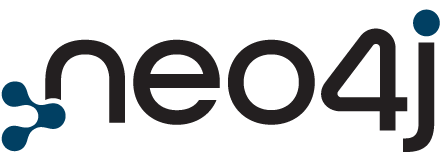DBMS > Amazon DynamoDB vs. Cloudflare Workers KV vs. Google Cloud Spanner
System Properties Comparison Amazon DynamoDB vs. Cloudflare Workers KV vs. Google Cloud Spanner
Please select another system to include it in the comparison.
| Editorial information provided by DB-Engines | ||||||||||||||||||||||||||||||||||||||||||||||||||||||||||||||||||||||||||||||||||||||||||||||||||
| Name | Amazon DynamoDB Xexclude from comparison | Cloudflare Workers KV Xexclude from comparison | Google Cloud Spanner Xexclude from comparison | |||||||||||||||||||||||||||||||||||||||||||||||||||||||||||||||||||||||||||||||||||||||||||||||
| Description | Hosted, scalable database service by Amazon with the data stored in Amazons cloud | A global, low-latency, key-value store for applications on Cloudflare with exceptionally high read volumes and low-latency. | A horizontally scalable, globally consistent, relational database service. It is the externalization of the core Google database that runs the biggest aspects of Google, like Ads and Google Play. | |||||||||||||||||||||||||||||||||||||||||||||||||||||||||||||||||||||||||||||||||||||||||||||||
| Primary database model | Document store Key-value store | Key-value store | Relational DBMS | |||||||||||||||||||||||||||||||||||||||||||||||||||||||||||||||||||||||||||||||||||||||||||||||
|
|
|
| |||||||||||||||||||||||||||||||||||||||||||||||||||||||||||||||||||||||||||||||||||||||||||||||
| Website | aws.amazon.com/dynamodb | www.cloudflare.com/developer-platform/workers-kv | cloud.google.com/spanner | |||||||||||||||||||||||||||||||||||||||||||||||||||||||||||||||||||||||||||||||||||||||||||||||
| Technical documentation | docs.aws.amazon.com/dynamodb | developers.cloudflare.com/kv/api | cloud.google.com/spanner/docs | |||||||||||||||||||||||||||||||||||||||||||||||||||||||||||||||||||||||||||||||||||||||||||||||
| Developer | Amazon | Cloudflare | ||||||||||||||||||||||||||||||||||||||||||||||||||||||||||||||||||||||||||||||||||||||||||||||||
| Initial release | 2012 | 2018 | 2017 | |||||||||||||||||||||||||||||||||||||||||||||||||||||||||||||||||||||||||||||||||||||||||||||||
| License | commercial | commercial | commercial | |||||||||||||||||||||||||||||||||||||||||||||||||||||||||||||||||||||||||||||||||||||||||||||||
| Cloud-based only | yes | yes | yes | |||||||||||||||||||||||||||||||||||||||||||||||||||||||||||||||||||||||||||||||||||||||||||||||
| DBaaS offerings (sponsored links) Providers of DBaaS offerings, please contact us to be listed. | ||||||||||||||||||||||||||||||||||||||||||||||||||||||||||||||||||||||||||||||||||||||||||||||||||
| Server operating systems | hosted | hosted | hosted | |||||||||||||||||||||||||||||||||||||||||||||||||||||||||||||||||||||||||||||||||||||||||||||||
| Data scheme | schema-free | schema-free | yes | |||||||||||||||||||||||||||||||||||||||||||||||||||||||||||||||||||||||||||||||||||||||||||||||
| Typing | yes | no | yes | |||||||||||||||||||||||||||||||||||||||||||||||||||||||||||||||||||||||||||||||||||||||||||||||
| XML support | no | no | ||||||||||||||||||||||||||||||||||||||||||||||||||||||||||||||||||||||||||||||||||||||||||||||||
| Secondary indexes | yes | no | yes | |||||||||||||||||||||||||||||||||||||||||||||||||||||||||||||||||||||||||||||||||||||||||||||||
| SQL | no | no | yes | |||||||||||||||||||||||||||||||||||||||||||||||||||||||||||||||||||||||||||||||||||||||||||||||
| APIs and other access methods | RESTful HTTP API | HTTP REST Proprietary protocol | gRPC (using protocol buffers) API JDBC RESTful HTTP API | |||||||||||||||||||||||||||||||||||||||||||||||||||||||||||||||||||||||||||||||||||||||||||||||
| Supported programming languages | .Net ColdFusion Erlang Groovy Java JavaScript Perl PHP Python Ruby | C C++ Dart JavaScript Kotlin Python Rust Scala | Go Java JavaScript (Node.js) Python | |||||||||||||||||||||||||||||||||||||||||||||||||||||||||||||||||||||||||||||||||||||||||||||||
| Server-side scripts | no | no | no | |||||||||||||||||||||||||||||||||||||||||||||||||||||||||||||||||||||||||||||||||||||||||||||||
| Triggers | yes | no | no | |||||||||||||||||||||||||||||||||||||||||||||||||||||||||||||||||||||||||||||||||||||||||||||||
| Partitioning methods | Sharding | Sharding | ||||||||||||||||||||||||||||||||||||||||||||||||||||||||||||||||||||||||||||||||||||||||||||||||
| Replication methods | yes | yes | Multi-source replication with 3 replicas for regional instances. | |||||||||||||||||||||||||||||||||||||||||||||||||||||||||||||||||||||||||||||||||||||||||||||||
| MapReduce | no | no | yes | |||||||||||||||||||||||||||||||||||||||||||||||||||||||||||||||||||||||||||||||||||||||||||||||
| Consistency concepts | Eventual Consistency Immediate Consistency | Eventual Consistency | Immediate Consistency | |||||||||||||||||||||||||||||||||||||||||||||||||||||||||||||||||||||||||||||||||||||||||||||||
| Foreign keys | no | no | yes | |||||||||||||||||||||||||||||||||||||||||||||||||||||||||||||||||||||||||||||||||||||||||||||||
| Transaction concepts | ACID | no | ACID | |||||||||||||||||||||||||||||||||||||||||||||||||||||||||||||||||||||||||||||||||||||||||||||||
| Concurrency | yes | yes | yes | |||||||||||||||||||||||||||||||||||||||||||||||||||||||||||||||||||||||||||||||||||||||||||||||
| Durability | yes | yes | yes | |||||||||||||||||||||||||||||||||||||||||||||||||||||||||||||||||||||||||||||||||||||||||||||||
| In-memory capabilities | no | no | ||||||||||||||||||||||||||||||||||||||||||||||||||||||||||||||||||||||||||||||||||||||||||||||||
| User concepts | Access rights for users and roles can be defined via the AWS Identity and Access Management (IAM) | Access rights for users, groups and roles based on Google Cloud Identity and Access Management (IAM) | ||||||||||||||||||||||||||||||||||||||||||||||||||||||||||||||||||||||||||||||||||||||||||||||||
More information provided by the system vendorWe invite representatives of system vendors to contact us for updating and extending the system information, | ||||||||||||||||||||||||||||||||||||||||||||||||||||||||||||||||||||||||||||||||||||||||||||||||||
Related products and servicesWe invite representatives of vendors of related products to contact us for presenting information about their offerings here. | ||||||||||||||||||||||||||||||||||||||||||||||||||||||||||||||||||||||||||||||||||||||||||||||||||
| More resources | ||||||||||||||||||||||||||||||||||||||||||||||||||||||||||||||||||||||||||||||||||||||||||||||||||
| Amazon DynamoDB | Cloudflare Workers KV | Google Cloud Spanner | ||||||||||||||||||||||||||||||||||||||||||||||||||||||||||||||||||||||||||||||||||||||||||||||||
| DB-Engines blog posts | Cloud-based DBMS's popularity grows at high rates The popularity of cloud-based DBMSs has increased tenfold in four years Increased popularity for consuming DBMS services out of the cloud | |||||||||||||||||||||||||||||||||||||||||||||||||||||||||||||||||||||||||||||||||||||||||||||||||
| Recent citations in the news | Ingest CSV data to Amazon DynamoDB using AWS Lambda Announcing the end of support for AWS DynamoDB Session State Provider Announcing configurable point-in-time recovery periods for Amazon DynamoDB Amazon DynamoDB re:Invent 2024 recap New Amazon DynamoDB zero-ETL integration with Amazon SageMaker Lakehouse | Amazon Web Services provided by Google News | We made Workers KV up to 3x faster — here’s the data Skip the setup: deploy a Workers application in seconds Making Workers AI faster and more efficient: Performance optimization with KV cache compression and speculative decoding Moving Baselime from AWS to Cloudflare: simpler architecture, improved performance, over 80% lower cloud costs Startup spotlight: building AI agents and accelerating innovation with Cohort #5 provided by Google News | Google Cloud Introduces HDD Tier for Spanner Database, Cutting Cold Storage Costs by 80% New features make Google's Spanner a database for AI Google Cloud Spanner gets dual-region configuration option Google Releases Spanner Graph into General Availability Google Cloud expands its database portfolio with new AI capabilities provided by Google News | |||||||||||||||||||||||||||||||||||||||||||||||||||||||||||||||||||||||||||||||||||||||||||||||
Share this page




